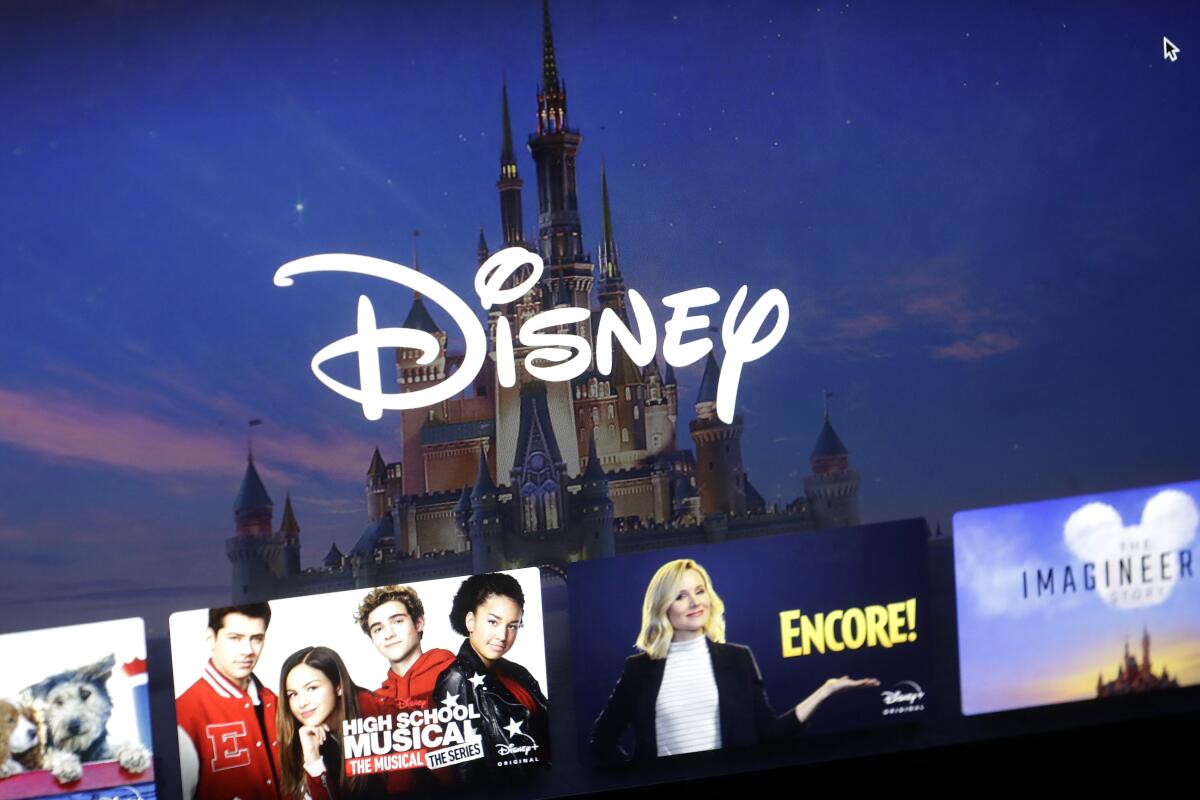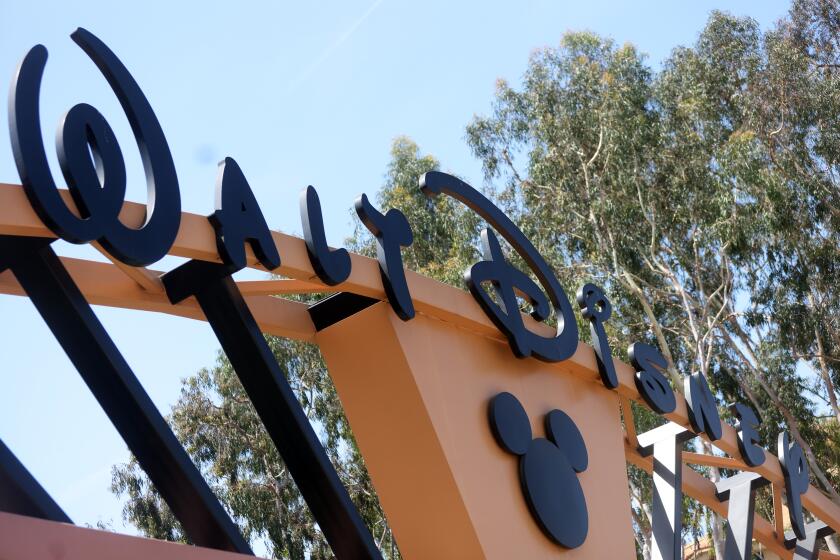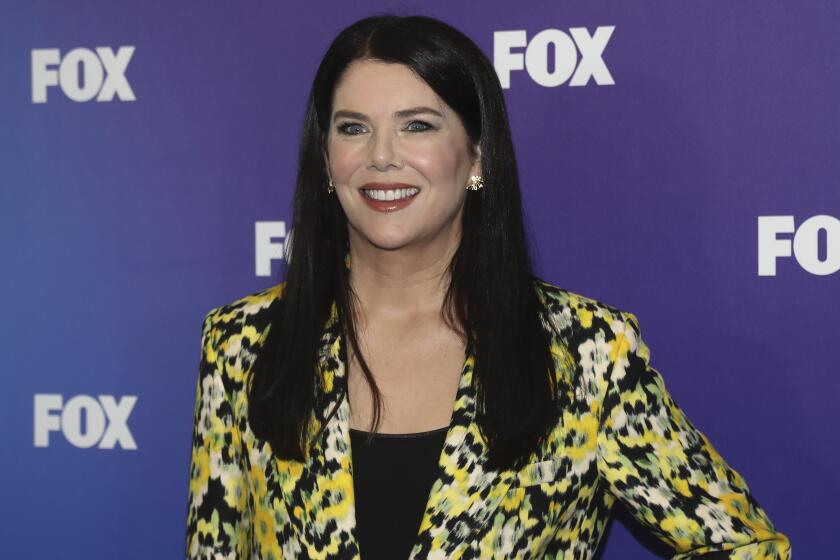Disney’s streaming business turns a profit. But parks show signs of trouble

- Share via
After years of losses totaling billions of dollars, Walt Disney Co.’s overall streaming business has reached profitability for the first time. Third-quarter results, however, were tempered by weakening demand at the company’s key parks unit.
The Burbank media and entertainment giant reported Wednesday that its streaming business — which consists of Disney+, Hulu and ESPN+ — took in about $6.4 billion in revenue for its fiscal third quarter, up 15% compared with a year earlier.
The streaming business notched $47 million in operating income, compared with a loss of $512 million a year earlier. During the most recent quarter, ESPN+ helped boost Disney’s streaming business over the profitability hump, at a time when Disney+ and Hulu saw an operating loss of $19 million.
The milestone comes one fiscal quarter earlier than Disney executives had anticipated.
“What we’ve been seeing with streaming is significant success largely driven by the success of our creativity,” Chief Executive Bob Iger said during a Wednesday morning call with analysts. “We’re bullish about the future of this business.”
Achieving profitability in Disney’s streaming business has been a top priority for Iger, who earlier this year held off activist investor Nelson Peltz in a proxy fight. Among other things, Peltz demanded that Disney show a realistic plan for achieving large margins of profitability in its streaming business. To reach that goal, Iger undertook a wide-ranging cost-cutting effort across the company, which slashed thousands of jobs.
The cuts at Disney Entertainment Television will reportedly affect National Geographic, Freeform and local television stations, as well as marketing and publicity teams.
Company executives said product and technology improvements in the streaming services would pay dividends. They mentioned that bundling packages, such as the recent deal Disney reached with Warner Bros. Discovery to offer Disney+, Hulu and Max for one price, has helped reduce subscriber churn, while the company’s early efforts to crack down on password sharing have not faced significant backlash.
Overall, the company generated revenue of $23.1 billion during the fiscal third quarter, up 4% year over year. Earnings, excluding certain items, were $1.39 per share, up from $1.03 a year earlier and higher than analysts’ estimates.
But investors weren’t convinced. Shares of Disney fell 4.4% to $85.96. Disney’s stock has declined 30% from its recent highs in April.
Subscription prices for Netflix, Disney+, Max and Peacock have crept up in the last year, and more consumers are turning to the free, ad-supported video-on-demand streaming service owned by Fox.
Wall Street was largely focused on the muted results from the company’s experiences division, which includes its amusement parks and cruise line, as well as merchandise.
The division had dominated the company’s financial results in recent fiscal quarters, aided in part by pent-up demand for travel since the COVID-19 pandemic began. But for the most recent quarter, the division reported operating income of $2.2 billion, down 3% from last year.
Disney said the decrease in operating income was due to softening consumer demand. Disney parks revenue is often seen as a bellwether for the broader economy, as it reflects spending trends and consumer sentiment. U.S. consumers have been beset by inflation, and recent jobs data have renewed fears of a coming recession.
“While investors cheered Disney’s progress on the streaming side, the worrisome news about the parks unit sent the stock downward in pre-market trading and is likely to increase pressure on CEO Bob Iger to deliver stronger shareholder returns,” Paul Verna, an Emarketer vice president, said in an emailed statement.
Results from the company’s U.S.-based parks decreased “modestly,” though year-over-year attendance was comparable and per-capita spending was “slightly up,” the company said. The parks’ attendees have long groused about rising prices for Disney vacations and merchandise as well as the proliferation of add-on charges for line-skipping perks.
The group brought in about $8.4 billion in revenue in the fiscal third quarter, up 2% year over year.
The company expects to see “flat-ish” revenue for its experiences division in the fourth quarter and for several quarters after that, Hugh Johnston, chief financial officer, said on the Wednesday call. Disney cited the Olympics’ effect on attendance at Disneyland Paris, as well as “cyclical softening” in China, as factors for fourth-quarter results.
And more competition is on the horizon. In Orlando, Fla., Walt Disney World will soon face a new rival in Universal’s Epic Universe theme park, set to open next year. It will feature four themed lands, including a “How to Train Your Dragon” area and Super Nintendo World.
The company’s studios business, which is on a rebound, contributed to the quarterly results, led by the success of Pixar’s “Inside Out 2.”
Disney’s entertainment division reported revenue of about $10.6 billion, up 4% year over year. Operating income for the segment totaled $1.2 billion, up from $408 million in the previous year. (The interest in “Inside Out 2” also drove viewers to Disney+, as the company said viewers’ desire to watch 2015’s “Inside Out” helped lead to more than 1.3 million sign-ups for the streaming service. Iger said the company is seeing similar trends with the previous “Deadpool” and “Planet of the Apes” movies.)
Disney’s most recent box office hit, Marvel’s “Deadpool & Wolverine,” was released during the current quarter.
Revenue for Disney’s sports business, which includes ESPN, increased 5% to about $4.5 billion, though the segment saw operating income of $802 million, down 6%. Domestic ESPN ad revenue rose 17% year over year, but it wasn’t enough to offset the $314-million operating loss from Disney’s Star India business, which saw higher programming and production costs due to the timing of the ICC T20 cricket World Cup.
More to Read
Inside the business of entertainment
The Wide Shot brings you news, analysis and insights on everything from streaming wars to production — and what it all means for the future.
You may occasionally receive promotional content from the Los Angeles Times.













